Gira Signalling Devices
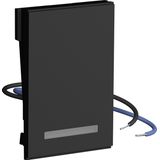
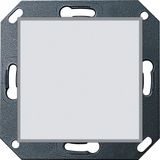
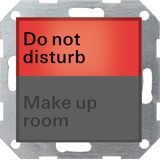

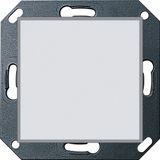
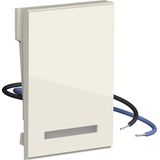
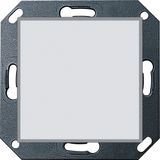
In control panels, machine rooms, building‑automation systems and public installations, the devices that provide visual or audible indication play a small but critical role. The Gira range of optical‑light and acoustic‑sound signalling devices addresses those “flag” functions: alerting of faults, indicating status, providing orientation or warning in environments where plain switches won’t suffice. From sizeable projects I’ve worked on, specifying the correct signalling unit up front avoids error‑states going unnoticed, minimises service visits and ensures the safety and clarity of the installation.
Gira Signal Lights & Indicator Lamps – Bright Visual Cues for Status and Faults
When you need a clear visual status indicator—for example on a control cabinet door or in a corridor display—you’ll use Gira signal lights or Gira indicator lamps. One example: a Gira „Light signal unit – System 55 – 117100” which is a red/green LED insert flush‑mounted at 230 V.
In practice: you check lens colour (red, green, amber, blue), mounting type (flush box, panel cut‑out), rated voltage (12 V, 24 V, 230 V), IP/IK rating (for panel or bulkhead), replaceable symbol or label plate, service‑life of LED, and whether the device integrates with your bus/control system. Using Gira ensures the signalling device matches the face‑plate and device range of the installation.
Gira Buzzers & Acoustic Signal Units – Audible Alerts for Alarms and Warnings
For audible alerts—alarms, fault warnings, evacuation signals—you’ll select Gira buzzers or acoustic signalling modules. While Gira’s catalogue focuses more heavily on security devices and smoke‑alarms, the signalling‑device section covers acoustic outputs as well. For example the online catalogue lists optical & acoustic signalling under „Light‑Signal and Accessories”.
In installation terms: you check dB level (≥ 85 dB typical for alarm‑room audible), tone count, reset mode, wiring (panel‑bus, analogue, 2‑wire), mounting orientation, compatibility with your fire/alarm system, and whether you need combined visual‑audible head (flasher + horn). Specifying the correct Gira buzzer avoids insufficient alert volume or mis‑match of tone which causes nuisance alarms.
Gira LED Signalling Devices & Alarm Beacons – High‑Visibility Warning & Status
For applications needing high‑visibility signals—industrial halls, public corridors, external notification—you’ll select Gira LED signalling devices or Gira alarm beacons. For instance, the Gira 236100 “LED orientation light” for System 55 is listed as an alternative signalling module.
From the field: these devices require checking LED colour/flash pattern, brightness (for daylight‑visible indication), service‑life of LEDs, acceptable ambient temperature range, ingress protection for outdoor/industrial use, mount‑type (panel vs wall vs ceiling), and whether the product supports labelling/engraving. Having them integrated in your standard brand (Gira) means spares, maintenance and matching appearance remain consistent across the project.
Visual‑Acoustic Indicators & Combined Signalling Units
In many modern installations you’ll opt for a combined unit integrating both visual and audible indication—what you might call a visual‑acoustic indicator. Many alarm systems, evacuation systems or automation panels require both light and sound. Gira’s product range and the online catalogue show listings under “Light‑Signal and Accessories” which can include combined signalling units.
In procurement terms: you will check whether the unit is purely visual, purely acoustic or combined; verify the mounting format (flush/in‑panel; surface‑mounted); check rated supply voltage; check tone/frequency; check flash pattern; check the coefficient of visibility at required distance; ensure it meets the regulatory indication standard (e.g., EN 54 for fire, or MRL for industrial machine‑guards). Specifying the correct Gira combined indicator at the design stage prevents later retrofit recombinations.
Procurement & Installation Insights from Practice
When wholesale‑ordering Gira optical‑light & acoustic‑sound signalling devices for building services, industrial or commercial projects, here are what procurement and installation teams typically compare:
- Voltage / Power Rating: is it 12 V, 24 V DC, 230 V AC? Does it match your panel supply or control‑bus?
- Mounting Format: flush/in‑panel vs surface‑mounted; required recess depth; standard face‑plate system (System 55) compatibility.
- Signal Type: Visual only, Audible only, or Combined Visual‑Acoustic; what tone pattern, what light colour or flash sequence is required?
- Environmental Rating: IP/IK rating; suitability for indoor panel, machine‑room, corridor, or outdoor wall. Ambient temperature range.
- Integration/Bus Compatibility: Does the unit connect to control‑bus, does it have monitoring/feedback? Does it integrate with alarm/control system (fire panel, PLC, automation bus)?
- Brand Ecosystem / Spare‑Part Logic: Using Gira throughout means spare modules match design lines, spares philosophy and documentation is unified—fewer surprises at service time.
- Stock / Lead‑time: Signalling units are often installed later in the build schedule—delays in delivery hold up final sign‑off and commissioning.
From experience: on a project where signalling heads were specified late, mismatched face‑plate finishes caused a re‑order of modules, delaying commissioning by days. Specifying the correct Gira signalling module in the main order avoids that.
Closing Note on Supply
Bank of Lamps supplies the full range of Gira optical‑light and acoustic‑sound signalling devices—signal lights, buzzers, indicator lamps, LED signalling devices, alarm beacons and combined visual‑acoustic units—from our central warehouse in Latvia. We support B2B clients, electrical installers, panel‑builders and system integrators across the UK, Germany, Netherlands, Baltics, France, Spain and Belgium. With bulk‑order flexibility, consistent brand‑stock and logistics tuned for professional installation schedules, you can focus on wiring and commissioning rather than sourcing parts.